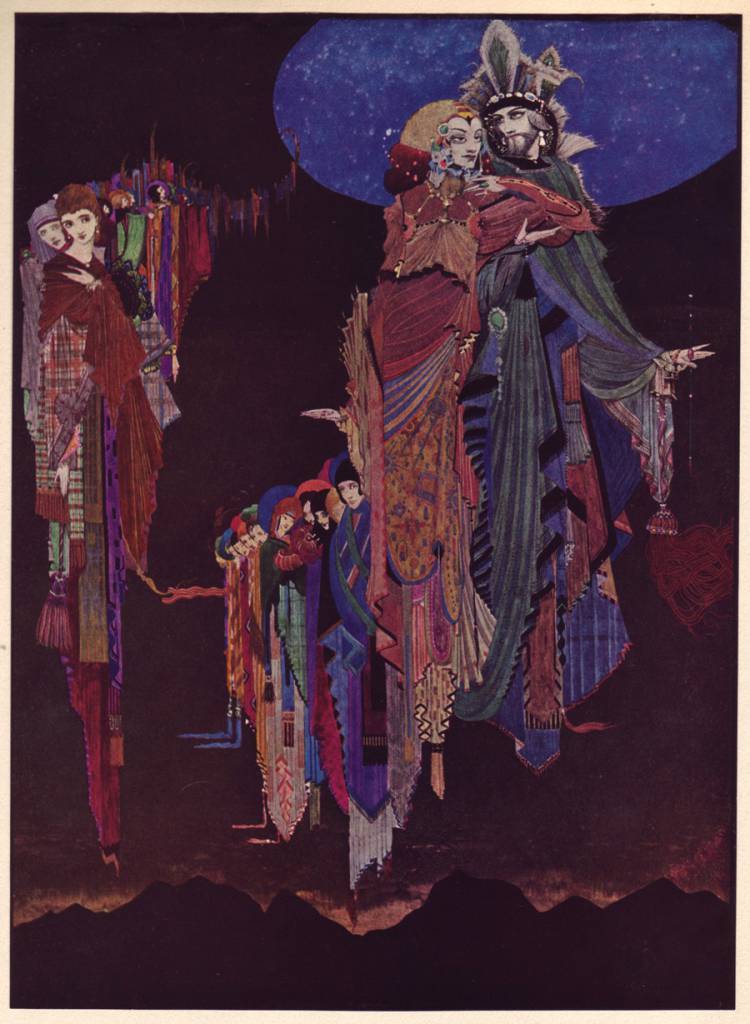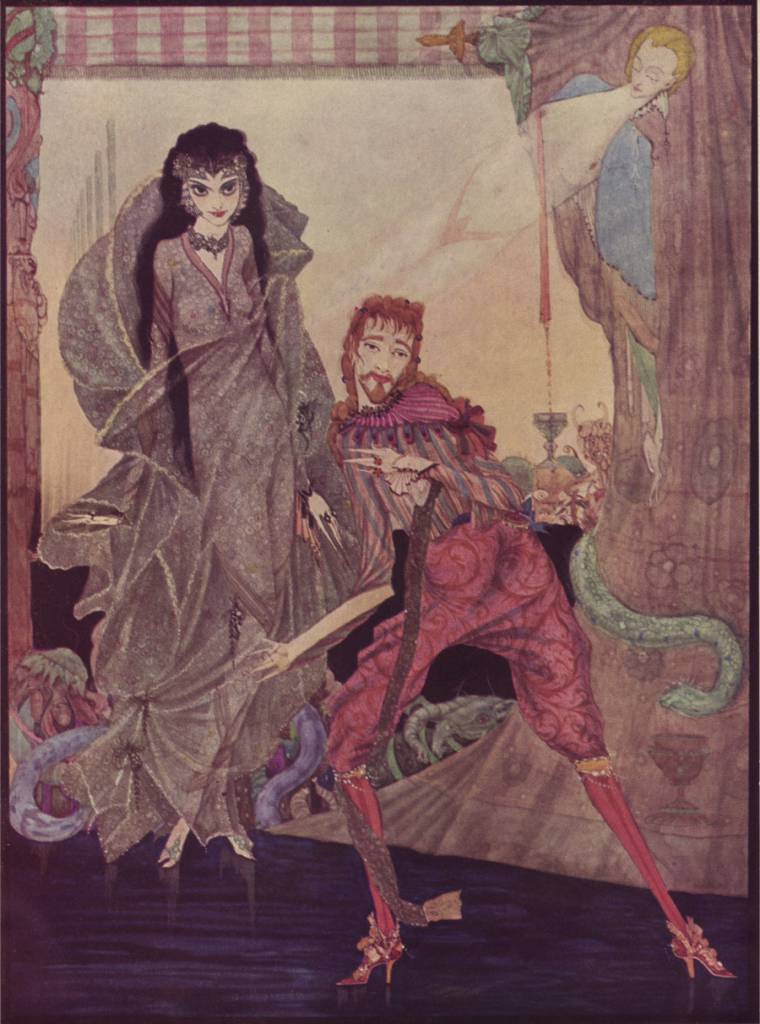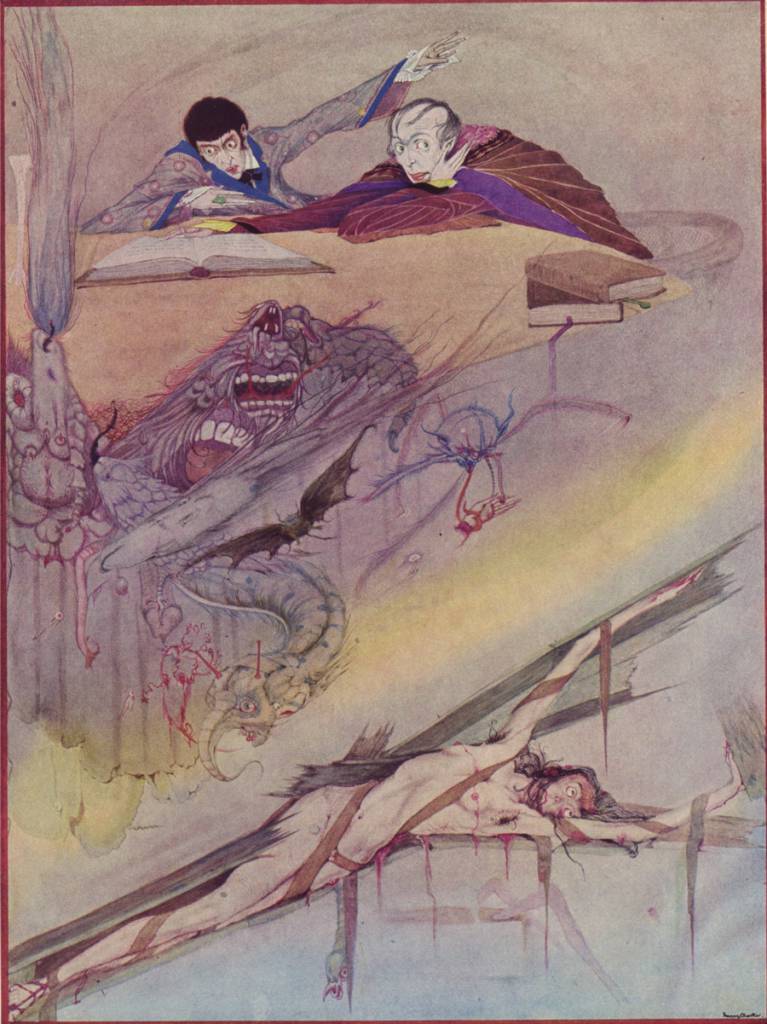
Harry Clarke (1889-1931) - Stained glass artist..
Harry Clarke (1889-1931) was one of Ireland’s greatest artists ever & his drawings are inticate & fine. His medium was stained glass & he created astonishing masterpieces which integrated Celtic art with Art Nouveau. Some 130 windows have survived.

One of Clarke’s most moving works is his Agony in the Garden (1924) which is in the Institute of Education & Celtic Culture in Dingle. It is one of a number of stunning windows in the Institute

He was born in Dublin & apprenticed to his father’s ecclesiastical decorating business & attended the Dublin Metropolitan College of Art & Design at night. Baptism of St Patrick (1912)

Clarke moved to London & made a career there as an illustrator. His first printed work was published in 1916 (Hans Christian Andersen’s Fairy Tales). Their decorative beauty, subtle eroticism & vague hint of menace are typical of Clarke’s approach.
He was creating works of transcendent beauty in his 20s. Clarke’s work for the Honan Chapel at UCC is part of an exquisite ensemble for one of the country’s most beautiful churches (1915-7).
In 1917 he completed a series of windows based on J M Synge’s poem Queen & in 1919 produced an Our Lady & Child for the Church of Assumption, Bride St, Wexford.
One of Clarke’s early secular stained glass masterpieces is the Song of the Mad Prince (1917). This jewel like window is set in a specially made box created by Dublin’s finest cabinetmakers, Hicks. Typical of Clarke is his love of Prussian Blue
He created a series of beautiful windows for St Mary’s Church, Nantwich (1920) which have an austere majesty belied by a rich Celtic approach to decoration.
His window for Castletownshend Church includes the Nativity & SS Luke & Louis (1918-20), panel for St Mary’s Church, Dorset (1920-1) & Window from Holy Trinity Church, Killiney.
1923 saw the publication of his illustrations for Tales of Mystery & Imagination by Poe. This made his name & demonstrated his ability to stand comparison with Beardsley. The images are brilliant, unsettling & magnificent.
One of Clarke’s greatest windows is the Eve of St Agnes (1923) currently installed in the Hugh Lane Municipal Gallery, Dublin. Dashing figures, astonishing command of the acid-etched process & jewel like finish combine to create one of the greatest triumphs in Irish art.
He illustrated Goethe’s Faust (1925) & this is considered by some as his greatest graphic work & was v much ahead of its time. Seldom has an artist taken such sweetness & revealed the macabre at the same time.
1925 saw the unveiling of his windows for Carrickmacross Church in Co Monaghan.
One of Clarke’s most famous stained glass window schemes was for Ballinrobe Church, Co Mayo (1926). These lights have been drawing visitors to the church since they were installed.
Housed in the National Gallery of Ireland is his Mother of Sorrows (1926) window. It is a magnificent work full of incident & with etiolated elegant figures with almost hallucinatory beauty. Visitors regularly gasp when they come across it.
St Patrick’s Purgatory, Lough Derg (1927-8)
His windows for Tullamore Church were installed in 1927-8
Clarke was diagnosed with TB in 1929 & attended a sanatorium in Davos. He realised he was dying & decided to return to Dublin but died on the journey in 1931 at just 41. His windows for the Church of the Nativity (1929-30)
Clarke is one of a mere handful of Irish artists whose work stands comparison with European contemporaries (including Francis Bacon, James Barry & Roderic O’Conor). His great masterpieces included the 1930 Geneva window based on Irish stories.




























































Comments
Yes one learns something every day that they knew nothing about..this mans art blew me away when I came across it in a old Hans Christian Andersen’s Fairy Tale..He's actually inspired a few artists over the years with his minute dot works..
Wonderful exhibition, great artworks, thank you.